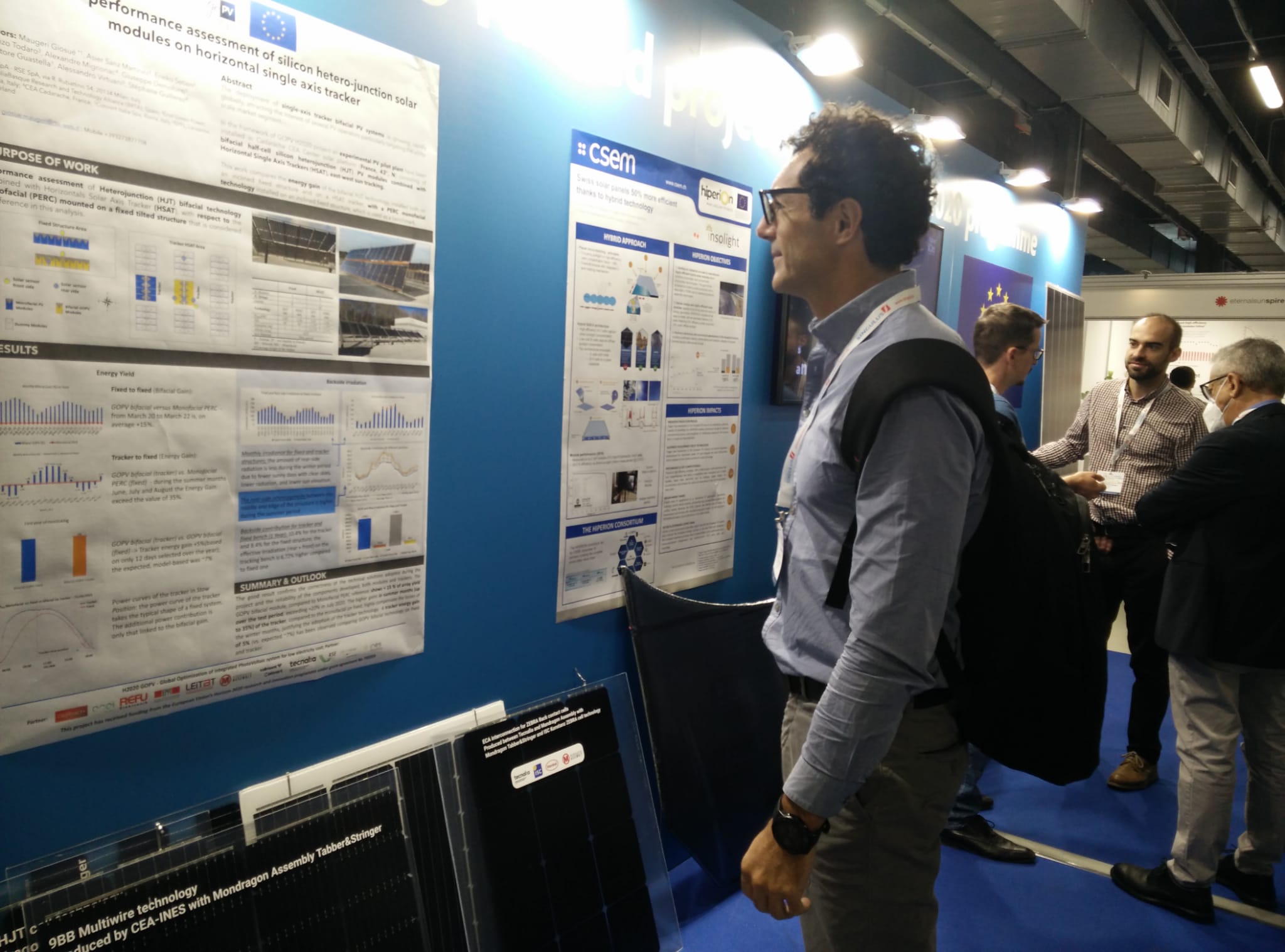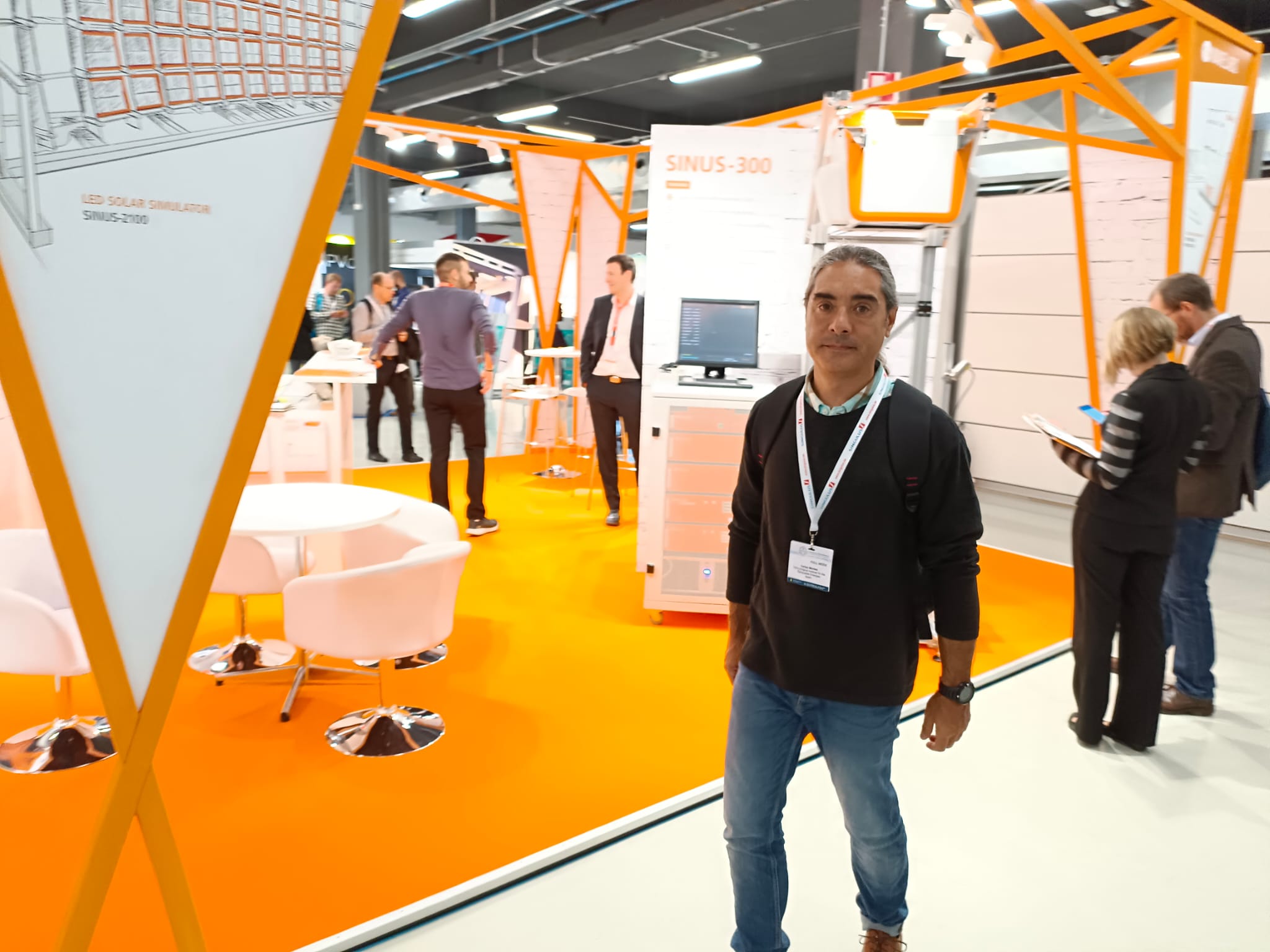The ITER Photovoltaic Cells Laboratory research group presented the latest achievements of their research in this prestigious international scientific event, held from September 26 to 30 in Milan, Italy.
The 8th edition of the World Conference on Photovoltaic Energy Conversion (WCPEC-8), the world´s conference par excellence regarding photovoltaic solar energy conversion was held last week. Here, the Institute of Technology and Renewable Energies (ITER), dependent on the Cabildo de Tenerife, participated with two scientific communications linked to the MACLAB-PV project.
With these two communications, prepared in collaboration with the University of La Laguna (ULL), ITER´s Photovoltaic Cells Laboratory research group presented the latest milestones achieved in the research carried out in the laboratory, which has been reinforced thanks to the European project MACLAB-PV, co-funded by the European INTERREG MAC 2014-2020 Program.
The results shared with the specialized scientific community in the WCPEC-8 congress, focus on the advances made by ITER and ULL in the development and improvement of the stability of photovoltaic cells based on Perovskite, a more efficient, accessible and less expensive material than Silicon, which it is being investigated very actively worldwide due to the possibilities it offers.
Specifically, progress has been made in the development of Perovskite-based thin-film photovoltaic cells manufactured under environmental conditions, which have a simplified architecture using a rear carbon electrode.
The use of new materials (polymers such as ethyl vinyl acetate, methylmethacrylate and polyvinylidene fluoride) to improve the stability of perovskite solar cells in humid and temperature conditions has also been studied.
These works were presented in the visual communications sessions of the Congress, by ITER´s PV department researchers, Carlos Montes and Luis Ocaña, and will be collected in the proceedings of the same for its next publication.
Within the framework of the MACLAB-PV project, ITER is working on the acquisition of various equipment that is promoting the implementation of new research lines for the manufacture and characterization of photovoltaic cells in its R+D Laboratory, a cutting-edge infrastructure in this field in the Canary Islands. The work of this scientific-technological infrastructure dedicated to improve the efficiency of solar cells through new thin-film materials, are of enormous interest for their application on an industrial scale, now that it reduces the costs of photovoltaic systems.
The WCPEC is the largest international conference on photovoltaic research, technologies and applications and, at the same time, is an exhibition of the photovoltaic industry, where leading companies and specialized manufacturers present technologies, innovations and new concepts for the photovoltaic sector. This event, which has been held since 1994, brings together the global photovoltaic community to present and discuss the latest developments in photovoltaic solar energy, establish and strengthen new collaboration networks.
Submitted articles:
- Montes, L. Ocaña, B. González-Díaz, S. González-Pérez, E. Llarena. Perovskite solar cells prepared in ambient conditions based on an HTM-free architecture that has a back contact deposited from a paste made with graphite, black carbon, MAI and PVDF dispersed in chlorobenzene (2AV.1.35).
- Ocaña, C. Montes, B. González-Díaz, S. González-Pérez, E. Llarena. Testing EVA, PMMA and PVDF encapsulated perovskite solar cells in a climatic chamber by following the international summit on organic photovoltaic stability (ISOS-T) protocols (2AV.1.16).


